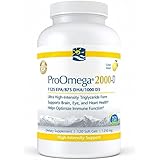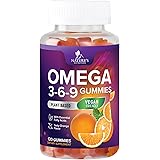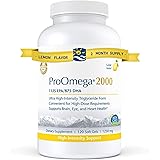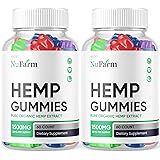The quest for a longer, healthier life for our beloved canine companions is a deeply held wish for many pet parents. While the average dog lives between 10 and 13 years, remarkable stories like Bluey, an Australian cattle dog who lived an astonishing 29 years, ignite hope and curiosity. Imagine adding nearly two decades to your dog’s expected lifespan, potentially allowing them to live almost three times the typical duration. This incredible feat, though rare, sparks a crucial question: what science-backed strategies can we adopt to extend our dogs’ years and enhance their quality of life?
The video above touches upon several pivotal factors, but the journey to understanding canine longevity is rich with scientific discovery and practical applications. It’s not about wishing for a magic carpet ride, but about implementing actionable changes rooted in research. The good news is that while genetics certainly play a role, there are significant “levers” you, as a dog parent, can pull starting today to positively influence your dog’s future. By focusing on core areas like diet, exercise, preventive care, and even the emotional bond you share, you can truly make a difference in helping your cherished pet thrive for as long as possible.
Understanding Dog Lifespans: Breed, Size, and the Potential for More
Before diving into specific longevity secrets, it’s helpful to establish a baseline for typical canine lifespans. Generally, the size and breed of a dog are significant determinants of how long they live. For instance, giant breeds, such as Great Danes or Irish Wolfhounds, often have shorter lives, typically ranging from seven to nine years. This is a stark contrast to smaller breeds, like Dachshunds, Toy Poodles, or Chihuahuas, which frequently push past 15 years, sometimes even reaching 18 years or more.
On the other hand, popular medium-to-large family dogs, including Labrador Retrievers, Golden Retrievers, and German Shepherds, usually fall within the 10 to 12-year range. These figures highlight that genetics indeed set the initial stage for a dog’s life expectancy. However, this is far from the complete picture; lifestyle choices, which are entirely within your control, can add valuable years across all breeds, defying these averages and offering a pathway to a longer, healthier life for your furry friend.
Keeping Your Canine Companion Lean: A Powerful Longevity Secret
One of the most impactful and yet frequently overlooked strategies for extending your dog’s lifespan is simply keeping them lean. Research overwhelmingly supports the notion that maintaining an ideal body weight is crucial for canine health and can contribute significantly to dog longevity. For example, a landmark 14-year study conducted by the University of Pennsylvania provided compelling evidence on this topic.
This study specifically tracked Labrador littermates and found that the dogs whose calorie intake was restricted by 25% lived, on average, 1.8 years longer than their heavier siblings. Imagine, nearly two additional years of companionship and joy, simply by exercising portion control and managing caloric intake effectively. While it’s tempting to shower our dogs with treats and extra food as a sign of affection, those extra calories, despite feeling like love in the moment, can unfortunately contribute to a variety of health issues in the long run.
Excess weight in dogs is not merely about aesthetics; it significantly elevates the risk of serious conditions such as arthritis, diabetes, heart disease, and even certain types of cancer. A lean dog, however, benefits from enhanced mobility, increased playfulness, and a greater overall engagement with life, making this a pivotal step toward a longer, healthier life. Focusing on balanced meals, limiting treats, and regularly assessing your dog’s body condition are among the most straightforward and scientifically validated methods to add precious years to their life, setting a robust foundation for their well-being.
Prioritizing Diet Quality: Fueling a Longer, Healthier Life
Beyond simply managing calorie intake, the quality of what’s in your dog’s bowl matters immensely for their long-term health and vitality. The story of Bluey, the Australian cattle dog who lived for nearly three decades, offers a compelling anecdotal insight: his owner reported feeding him fresh farm food, not kibble. While we cannot definitively attribute Bluey’s exceptional lifespan solely to his diet, this observation aligns with scientific understanding and common sense regarding the importance of diet quality as a fundamental pillar of dog longevity.
When evaluating diet options, kibble remains a popular choice due to its affordability, convenience, and status as a complete and balanced food. Many dogs thrive on kibble, but it’s crucial to recognize that kibble formulas can vary widely in quality, with many being ultra-processed. If you opt for kibble, prioritizing brands that provide transparent ingredient sourcing, utilize named protein sources (like “chicken” instead of “meat meal”), and offer third-party testing for contaminants such as mycotoxins and heavy metals can make a significant difference. Bonus points are awarded to companies that employ a veterinary nutritionist, ensuring their formulations are expertly designed.
Alternatively, fresh food diets, whether prepared at home or commercially, typically feature fresher, more whole-food ingredients and fewer fillers. A Belgian owner-reported survey involving over 500 dogs indicated that home-prepared fresh diets were associated with nearly three extra years of life compared to kibble. It’s important to note that this was an owner-reported survey, not a controlled trial, so results should be interpreted with caution; fresh food isn’t automatically superior if not properly balanced. Home-cooked diets also present challenges in terms of cost and the time required for preparation, along with the risk of nutritional imbalances if not formulated correctly.
Raw diets represent another category, though they are often the most controversial. Proponents praise them for their palatability and nutrient retention, yet research on their long-term benefits and safety remains limited. Many veterinarians express concerns about potential bacterial contamination and nutrient deficiencies if these diets are not meticulously prepared and balanced. Ultimately, instead of fixating on a single “perfect” diet, the key lies in ensuring your dog receives a complete and balanced diet. Veterinary organizations like the World Small Animal Veterinary Association emphasize that this means providing all essential nutrients—proteins, fats, carbohydrates, vitamins, minerals, and water—in the correct proportions so they can work synergistically to support health. A complete and balanced diet, free from excessive fillers and harmful additives, forms the indispensable foundation for your dog’s long-term health and improved dog longevity.
Beyond the Bowl: Strategic Supplemental Nutrition for Optimal Health
While a complete and balanced diet provides foundational nutrients, supplemental nutrition offers a powerful avenue to go beyond baseline health, potentially enhancing your dog’s chances for a longer, healthier life. These targeted supplements can provide specific support for vital systems that underpin longevity: the heart, brain, immune system, joints, and even stress resilience. Science continues to uncover the benefits of various compounds, suggesting that strategic supplementation can be a game-changer for canine wellness.
One such group is Omega-3 fatty acids, widely recognized for their anti-inflammatory properties. Studies have shown that Omega-3s can significantly improve outcomes in dogs suffering from heart disease, reduce the pain associated with arthritis, thereby decreasing the need for pain medications, and even support robust kidney function. These essential fatty acids are easily incorporated into a dog’s routine, often found in fish oil supplements, contributing to overall health and vitality.
Antioxidants are another crucial tool in the longevity arsenal, working to combat cellular damage caused by free radicals. A study published in the British Journal of Nutrition explored the effects of a blend of antioxidants, B vitamins, fish oil, and arginine in older dogs. After just six months, the dogs receiving these supplements demonstrated significantly better performance on memory and learning tasks compared to a control group. This suggests that targeted nutrients, particularly antioxidants, can play a vital role in helping aging dogs maintain cognitive sharpness and mental agility for a longer duration.
Emerging research also highlights the potential of functional mushrooms, such as Turkey tail and Lion’s mane. These powerful fungi are gaining attention for their purported abilities to support immune strength and enhance cognitive health, offering a natural boost to various bodily systems. Additionally, hemp-based supplements are becoming increasingly popular among dog parents. Early studies suggest that CBD, a compound found in hemp, may offer support for joint health, mobility, and emotional balance, contributing to a dog’s comfort and well-being as they age.
Testimonials from dog parents, like Kathy’s story about Garth who defied a six-month prognosis to celebrate his 18th birthday with a holistic routine including Lolahemp oil, underscore the potential impact of these supplements when combined with a balanced diet and regular exercise. Similarly, Patricia shared how Lolahemp improved her 11-year-old German Shepherd, River’s, quality of life significantly, transitioning her from a dog she thought she might lose to one enjoying life again. While every dog’s response will differ, incorporating research-supported supplements can be a powerful way to bolster your dog’s wellness and keep them thriving, adding a critical layer to the foundation of their long-term health.
The Power of Movement and Enrichment for a Vibrant Life
Even with optimal diet and supplements, a dog’s body and brain require continuous stimulation to remain strong and healthy. This brings us to movement and enrichment, two essential, cost-free longevity tools you can start implementing today. The historical example of Bluey, the near-30-year-old Australian cattle dog, underscores this point; he actively worked sheep and cattle for over two decades, demonstrating the profound benefits of consistent daily activity on a dog’s long-term health.
Regular physical exercise is indispensable for protecting the heart, strengthening muscles, maintaining joint mobility, and supporting overall dog longevity. It ensures that the body remains limber and capable, allowing dogs to enjoy their active lives well into their senior years. The benefits extend beyond the physical; however, dog parents often overlook the critical need for mental exercise. A significant 2012 study provided compelling evidence that senior dogs who received environmental enrichment—through activities like puzzle feeders, training sessions, and interactive play—maintained better cognitive function and exhibited slower age-related decline compared to dogs who lacked such stimulation.
Mental enrichment does not have to be complex or time-consuming. Simple activities like hiding treats around the house for your dog to find, engaging in short training sessions to learn new tricks, or utilizing interactive puzzle toys can keep their minds sharp and engaged. These activities combat cognitive decline, which is as crucial as physical fitness for a holistic approach to a longer, healthier life. Therefore, combining regular movement for a strong body with enriching activities for a sharp brain creates one of the most powerful and accessible longevity tools available to dog parents.
Preventive Vet Care: The Unsung Hero of Dog Longevity
While diet, supplements, movement, and enrichment are vital, even the fittest and sharpest dogs can harbor hidden health issues that quietly undermine their well-being. This is precisely why preventive veterinary care is not merely beneficial, but absolutely essential for maximizing your dog’s chances at a long, healthy life. Regularly scheduled preventive care adds years to a dog’s life, a fact supported by extensive research and veterinary experience.
Consider dental disease, which extends far beyond an issue localized to the mouth. Research consistently demonstrates its association with systemic inflammation and detrimental changes in vital organs such as the heart, liver, and kidneys. Simple, consistent practices like daily toothbrushing have been proven to significantly mitigate these risks, preventing a cascade of health complications. Routine check-ups are equally important; a comprehensive analysis by Banfield Pet Hospital, involving millions of dogs, revealed that consistent preventive care considerably reduces the risk of serious diseases, including severe dental disease, parvovirus, and heartworm.
While many dog parents might dread vet visits due to stress, cost, or a preference for natural approaches, it’s crucial to understand that holistic care is not anti-vet; rather, the two are complementary. Holistic pet care embraces the entire picture—diet, supplements, exercise, enrichment—and integrates these elements with modern preventive medicine. This integrated perspective provides your dog with the absolute best shot at a long, healthy life, catching potential issues early before they become life-threatening. A wise veterinarian once noted, “What takes dogs too soon isn’t always age, it’s what we miss,” highlighting the quiet but profound life-saving power of prevention. Proactive veterinary care is arguably the most fundamental investment in your dog’s future, ensuring they can enjoy the maximum possible dog longevity and vitality.
The Unquantifiable Power of The Bond: A Shared Path to a Longer, Healthier Life
We’ve explored the tangible levers of diet, supplements, movement, enrichment, and preventive care, all scientifically validated pathways to a longer, healthier life for your dog. Yet, there remains one profound factor that science struggles to fully quantify, but whose impact is undeniably immense: the intrinsic bond we share with our canine companions. Dogs don’t just require sustenance and medical attention; they need us, our presence, and our unwavering affection.
Scientific inquiry actually provides fascinating insights into this unique connection. One study illustrated that positive owner-dog interactions lead to a reduction in cortisol, the body’s primary stress hormone, in dogs. This means that a strong, secure, and loving bond actively helps dogs maintain a calmer demeanor and better cope with stressful situations, ultimately benefiting their long-term physiological health. But the remarkable aspect of this bond is its reciprocal nature.
A study published in Science revealed that when dogs and their owners gaze into each other’s eyes, both experience a surge of oxytocin, often termed the “bonding hormone.” This release of oxytocin is associated with reduced stress levels and a deeper sense of connection for both parties. Furthermore, the esteemed Harvard Study of Adult Development, which stands as the longest-running study on human longevity, concluded that close relationships, rather than wealth or social status, are the strongest predictors of a meaningful and long human life. This perspective directly correlates with the profound joy and purpose that our dogs bring into our lives.
When you consistently nurture that irreplaceable bond with your dog—through daily walks, engaging playtime, shared moments of quiet affection, and even simple eye contact—you are contributing far more than just comfort. You are actively giving them more years of well-being, while simultaneously enriching your own life with increased depth, joy, and purpose. Perhaps the true secret to both human and dog longevity lies within this powerful, mutually beneficial bond that allows us all to thrive together.
Unlocking the 30-Year Secret: Your Dog Longevity Q&A
What is the average lifespan of a dog?
The average dog typically lives between 10 and 13 years. However, this can vary significantly based on factors like breed and size.
Do all dog breeds live for the same amount of time?
No, a dog’s lifespan often depends on its size and breed. Smaller breeds tend to live longer than larger or giant breeds.
What’s a simple but important way to help my dog live longer?
One very impactful way is to keep your dog lean and at an ideal body weight. Managing their calorie intake can significantly contribute to a longer, healthier life.
How do exercise and mental enrichment help my dog?
Regular exercise protects their heart, strengthens muscles, and maintains joint mobility. Mental enrichment, like puzzle toys or training, keeps their mind sharp and combats cognitive decline.
Why is it important to take my dog to the vet regularly?
Preventive veterinary care is essential because it helps catch hidden health issues early. Regular check-ups and practices like dental care can prevent serious diseases and add years to your dog’s life.











